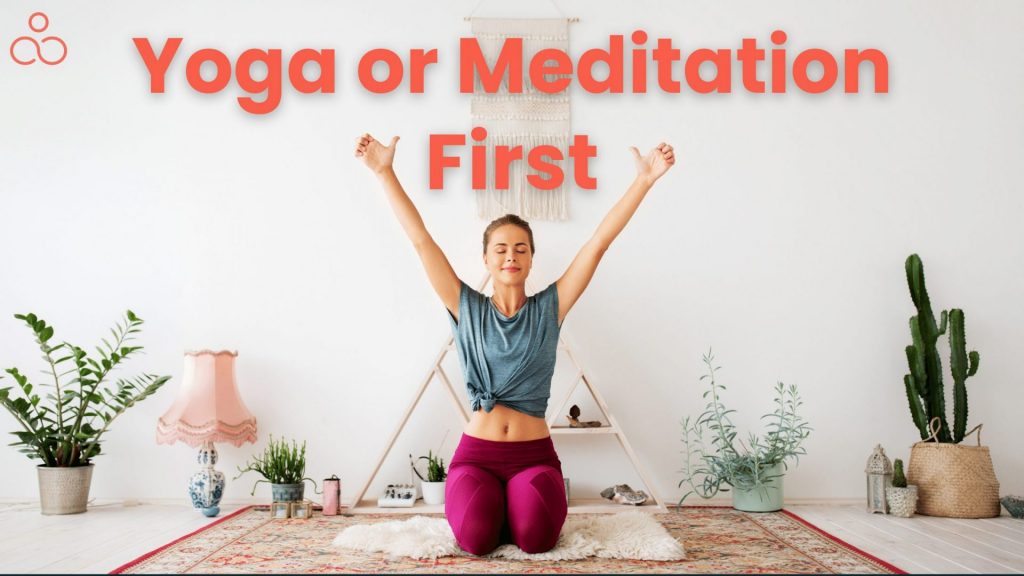The age-old debate about Yoga or meditation first may never be solved, as these two practices have been around for centuries and are both incredibly beneficial for the mind and body. But which should you practice first? Whether you’re an experienced Yogi or a novice meditator, the answer to this question can be more apparent. The best way to decide which practice is proper for you is to explore the unique benefits each one offers. Let’s explore the differences between the two and help you build a routine accordingly.
What is meditation?
Meditation is a technique to bring serenity to both your mind and body. Did you know that 10 minutes of meditation is equal to 4 hours of sleep? It can help you feel more relaxed and focused. Take a comfortable seat or lie down and shut your eyes when meditative. You then focus on your breath or on a word or phrase that you repeat in your mind. Meditation can help you feel more peaceful and can help you deal with stress.
What is Yoga?
Yoga helps improve strength, flexibility, and emotional well-being, promoting overall balance and inner peace. It is a type of exercise that helps you stretch and relax your muscles. It’s a way to practice mindfulness and stay in the present moment. It can help you become more flexible, have better posture, and even reduce stress and anxiety. Yoga also includes breathing exercises and meditation, which can help you become more mindful and help you focus on the present. Practicing Yoga daily or Yoga three times a week might help reap an abundance of benefits.
The connection between Yoga and meditation
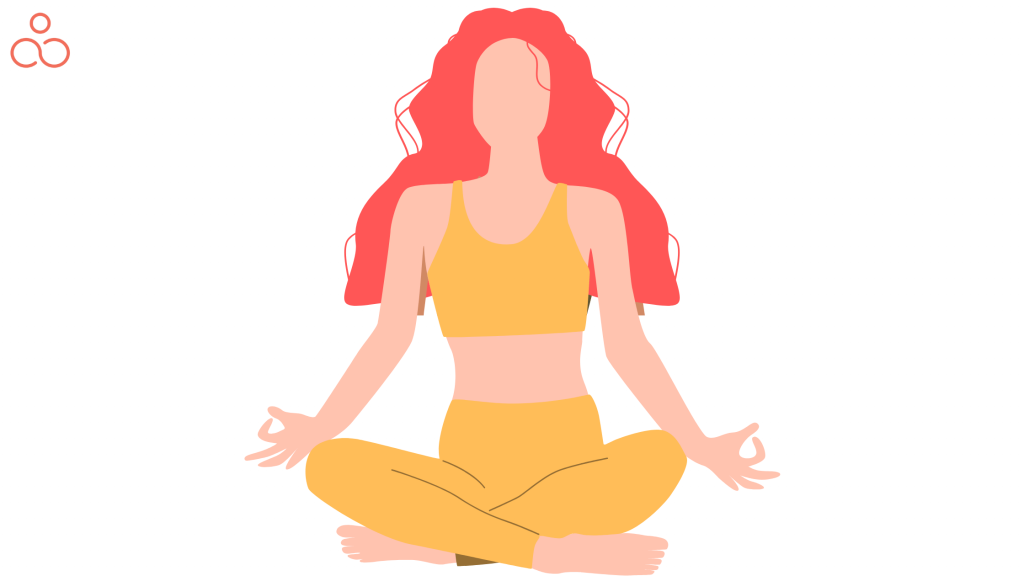
Practicing Yoga has become synonymous with performing physical postures or asanas. However, Yoga is largely centered around meditation. The eight limbs of Yoga, of which asana is only a part, helps us prepare for the final stage of our yogic journey, meditation. The Yoga Sutra, authored by Master Patanjali describes these eight limbs of Yoga or ashtanga in Sanskrit. Each of the limbs is closely tied to meditation, which is the ultimate goal of Yoga. Through meditation, we unite the self with the object of meditation, reaching the final goal of Yoga which is samadhi.
How to Incorporate Meditation into Your Yoga Practice?
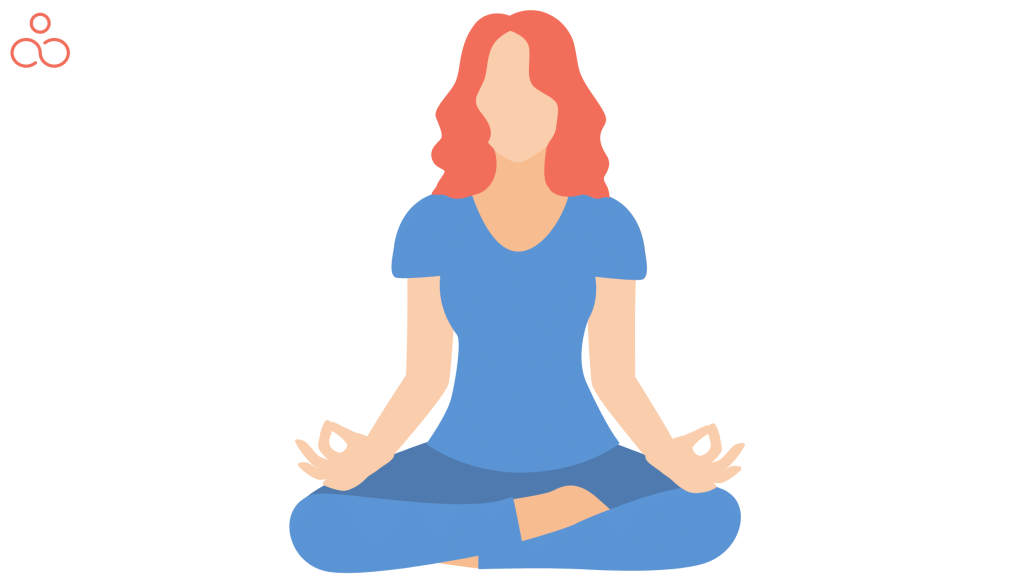
- Yoga merges meditation with physical postures, focusing on the harmony between the mind, body, and breath while practicing presence on the mat.
- Incorporating a moving meditation into your practice is all about living in the moment, appreciating the sensations and movements in each posture.
- Rather than striving for a certain shape or planning your next move, it’s important to savor each moment as it arrives.
- Although there’s no definite guide for how to do Yoga meditation, there are useful strategies which can help you get out of your head and into your body.
- If you have only been doing Yoga to sweat, then try to connect with your body by setting an intention or choosing a mantra.
- To make sure that you go at a comfortable pace, slow down but not too much. You do not need to rush through each pose.
- Rather, move at a pace that feels natural to you and does not rush your breathing. Breath is a key component of Yoga.
- Find your Ujjayi breath, inhale, exhale through your nose, and maintain a slight contraction in the back of your throat while keeping your lips shut.
- Start by exhaling and match poses with breaths. You can hold poses longer if needed. Exhale to release unwanted thoughts and feelings.
- Focus on physical sensations such as muscle firing in Warrior II, stretching in downward dog, and hip stretching in Pigeon Pose.
- Pushing hands or feet into the floor will engage your muscles and keep you grounded.
- Pay attention to areas with tension, desired poses to stay in, and small body adjustments. To enhance mindfulness, consider closing your eyes when practicing a known sequence like Sun Salutation.
- Let your mind wander, but redirect your focus back to your body and breath when needed. If anxious thoughts arise, acknowledge and release them.
- Remember, there is no right way to meditate during Yoga, just exist in the present moment and honor your body’s needs. Stressing about it doesn’t help.
Why can’t meditation be replaced with Yoga?
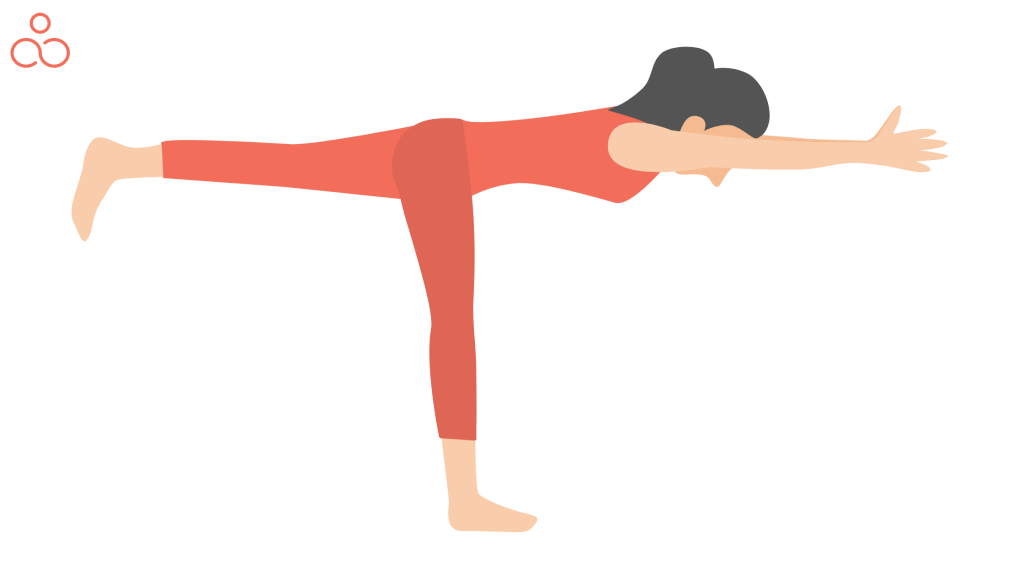
Meditation and Yoga have different purposes. Meditation aims to calm the mind and focus on thoughts, while Yoga uses physical poses to maintain physical health. A combination of both activities yields the best results. Using Yoga poses before meditating can activate the sympathetic nervous system, while doing relaxing poses after can trigger the parasympathetic nervous system and promote relaxation. Practicing restorative Yoga flows and Yin Yoga poses beforehand can prepare the mind and body for a deeper meditation practice, allowing for better focus on the present moment and disregarding any distractions.
Is there an ideal time to meditate?
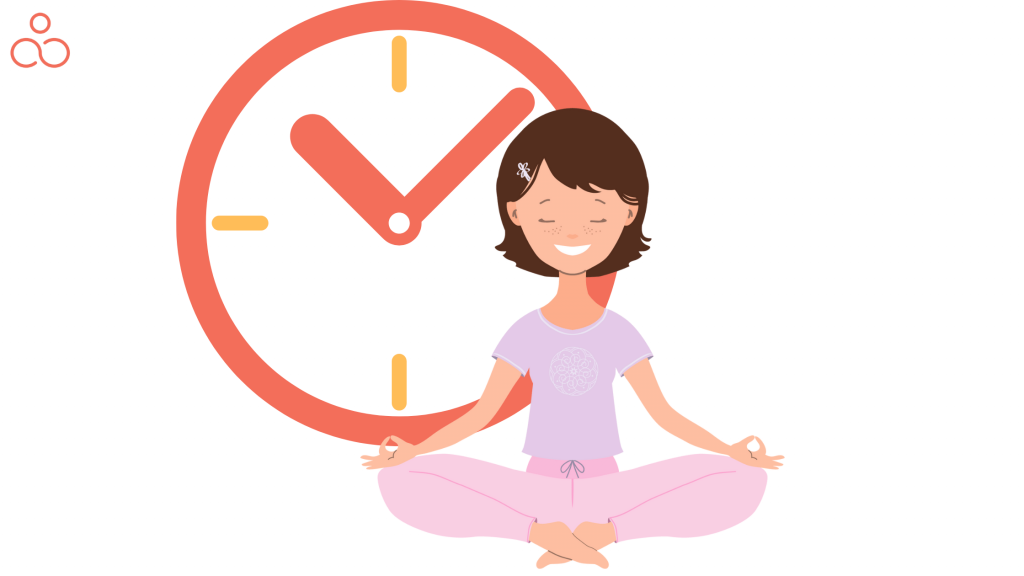
The ideal time of day to meditate is during the “ambrosial hours,” which occur 2 1/2 hours before sunrise and when the sun is at a 60-degree angle to the Earth. This time period is beneficial for spiritual work due to the available stillness and energy. However, if you have a busy schedule, it is advised to meditate at any time that works best for you. Meditation can be done for as little as three minutes, making it an excellent way to start and end your day or take a break during the day. It is recommended to meditate early in the morning or around 2 to 3 p.m. based on your natural rhythms to maintain a sense of calmness and connection throughout the day.
Difference between Yoga and meditation
| Yoga | Meditation | |
| Practice | Yoga is a physical practice that involves postures, breathing exercises, and meditation. | Meditation is a mental practice that focuses on relaxation and calming the mind. |
| Approach | Yoga requires more physical exertion than meditation, as it Combines postures with breathwork and meditation. | Meditation, on the other hand, is more focused on mental effort and requires less physical activity. |
| Benefits | The benefits of Yoga can be felt almost immediately. | The benefits of meditation are cumulative and take longer to manifest. |
| Form | Yoga can be seen as a form of exercise. | Meditation is seen as a form of relaxation. |
| Focus | Yoga involves stretching and toning of the body. | Meditation is more focused on the mind and its ability to control the body. |
Similarities between Yoga and meditation
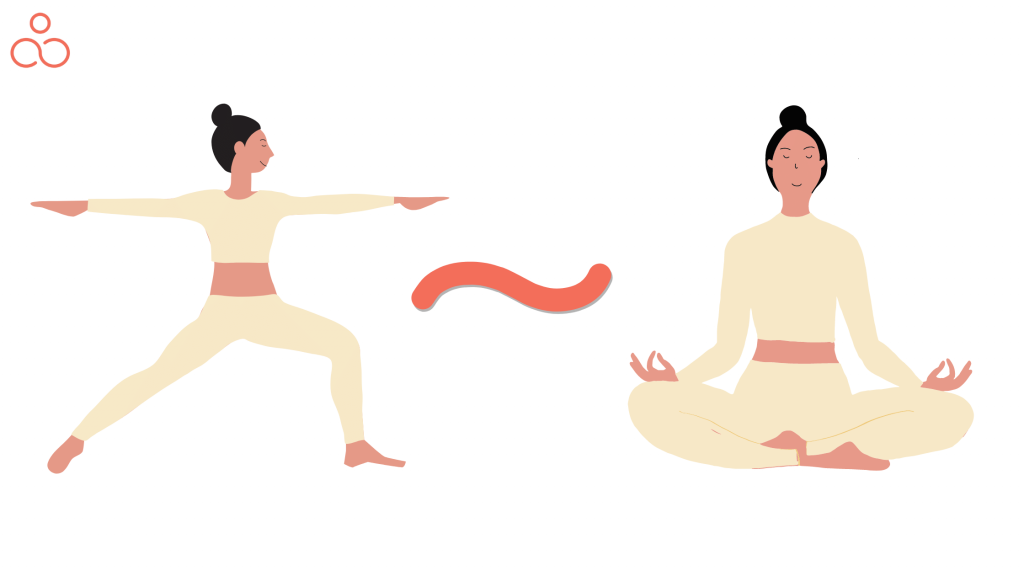
- Yoga and meditation are both practices that focus on developing body and mind awareness.
- Both practices emphasize breath control, meditation, and physical postures.
- Both practices also emphasize the importance of relaxation, stillness, and focusing on the present moment.
- Both practices require dedication and patience in order to achieve their goals.
- Lastly, both Yoga and meditation can be used as tools to help reduce stress and anxiety.
What to do first, Yoga or meditation?
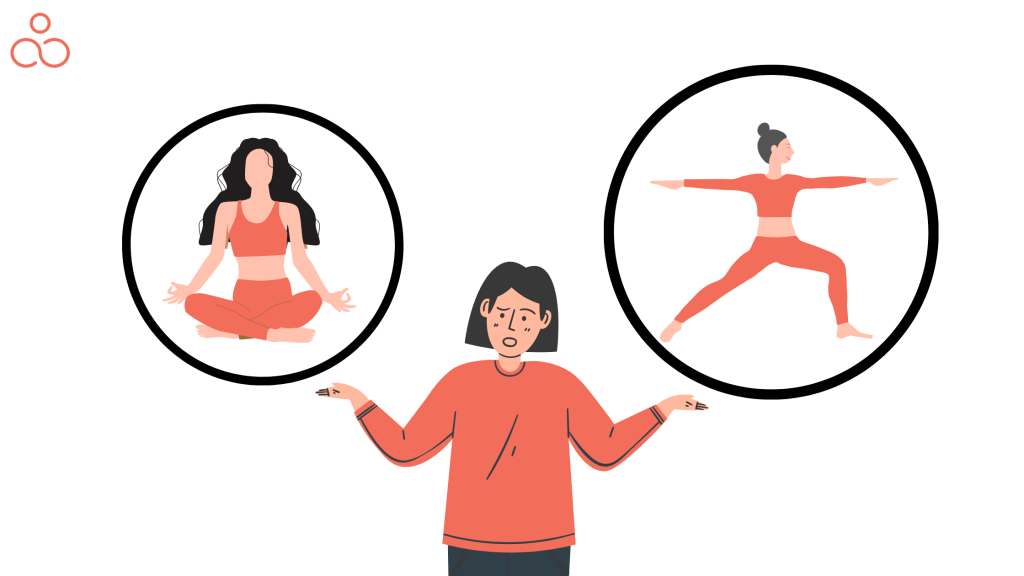
The effects of practicing Yoga and meditation may vary based on the techniques used. It is generally better to meditate before doing Yoga as it helps with relaxation and concentration. Afterward, Yoga can be used to stretch and move the body with a renewed focus and energy. However, for a gentler and more restorative Yoga practice, it’s recommended to meditate first to relax and connect more deeply with the body. If engaging in a more vigorous Yoga practice, meditating afterward can help in cooling down and relaxing. Incorporating regular exercise and meditation can bring about significant health benefits, but it’s important to ensure that they complement each other. To balance the nervous system and stimulate subtle energy effectively, it’s best to meditate after Yoga and breathwork. If not practicing Yoga or breathwork, meditating after exercise is recommended to calm the mind and release stress. Moreover, people with attention deficit disorder, anxiety, depression, and compulsive thoughts can benefit from doing “work-friendly” exercises before meditation. Finally, by meditating after exercising, it’s possible to deepen the practice.
Discovering a Yoga and Meditation Practice that Suits Your Schedule and Needs
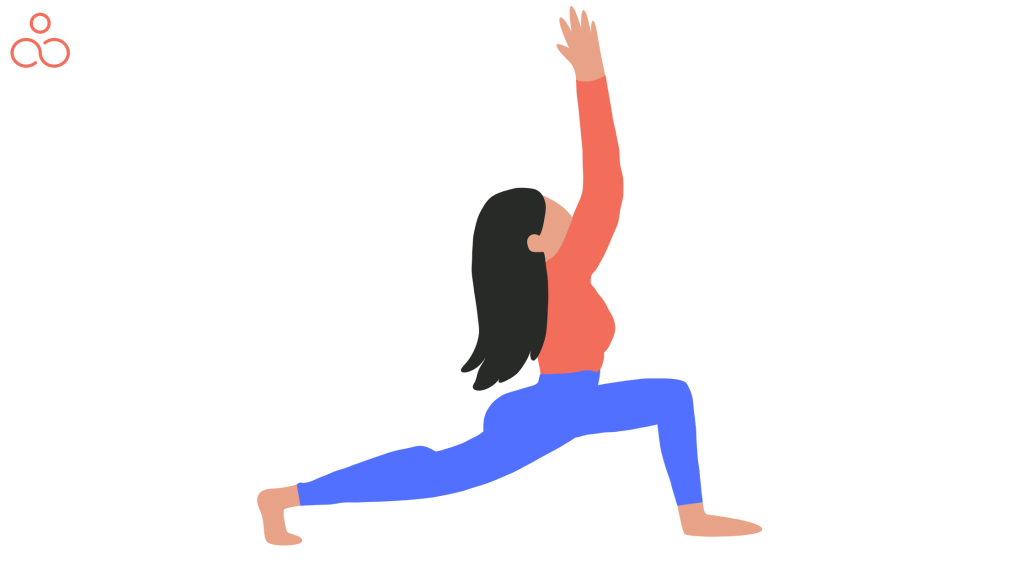
- Think about your lifestyle and current physical and mental activities
When deciding on a Yoga and meditation practice, you should think about your lifestyle and current physical and mental activities. It’s also important to consider the amount of time and energy you can devote and the type of environment you prefer.
- Have an idea of what you want
Once you have an idea of what you want, you can explore different types of practices and find one that matches your needs and preferences.
- Aim for relaxation or energy
While the traditional approach is to do Yoga before meditating, other considerations such as schedule and lifestyle may affect your mindfulness practice. Whether you aim for relaxation or energy and the particular type of Yoga or meditation you choose can impact your process and practice.
- Choose your practice
When it comes to practicing Yoga and meditation, many people prefer doing it in the morning or evening. The choice you make usually influences the kind of practice you choose. For instance, a person who prefers evening practice may choose a calming Yoga practice with deep stretches like yin Yoga to release tensions and energy from the body. On the other hand, morning practitioners may choose an energizing Yoga practice.
- Prioritize and consider the benefits that interest you
When developing your practice, it’s essential to prioritize and consider the benefits that interest you. Those seeking spiritual enlightenment can benefit from yogis’ traditional way, which involves doing Yoga before meditation.
- Choose calming evening practices for anxiety reduction
This approach prepares the mind by releasing psychic knots, tension, and pent-up energy. If you want to see the mental and emotional health benefits of Yoga and meditation, it’s best to choose calming evening practices for anxiety reduction or an invigorating morning practice to boost your mood.
- Having a daily practice routine
For those struggling with chronic pain, having a daily practice routine and supplementing with short practices during the day can be helpful in managing chronic pain, inflammation, and discomfort.
Discover How Yoga Knots Enhance Your Meditation Practice
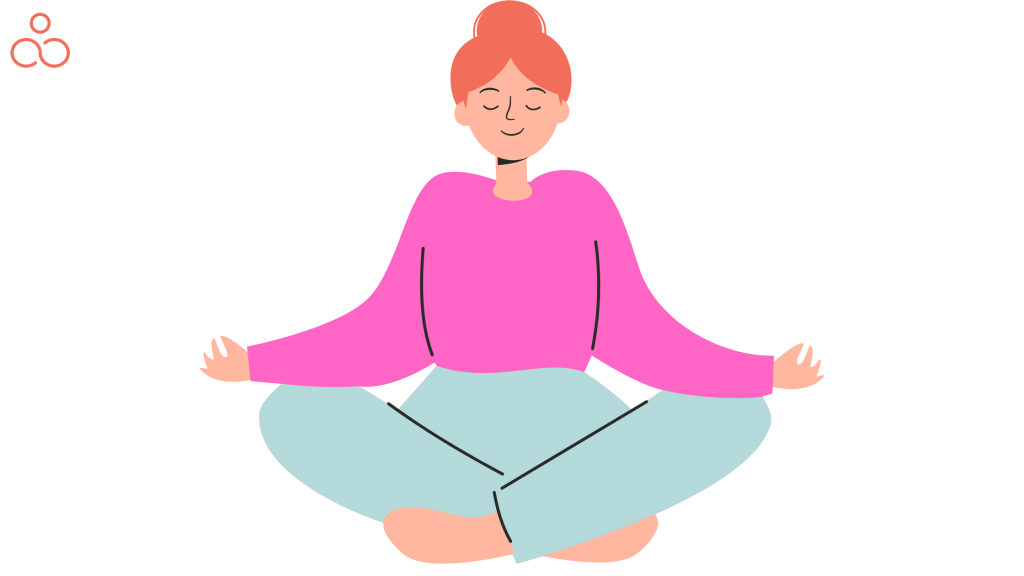
Kundalini Yoga is said to have three obstacles, referred to as grantis or psychic knots. These knots are located in the chest, hips, and head, and symbolize the struggles experienced by all yogis. Grantis act as psychic barriers, hindering the progress of Yoga and meditation practices. As the aim of Kundalini Yoga is to awaken life force throughout the body and chakras, these knots block the passage of life force and prevent mental clarity and power. The three knots are called Brahma, Vishnu, and Rudra, each signifying an attachment. By practicing Yoga, life force passes through these knots, leading to greater awareness, clarity, and power. Yoga is essential for successful meditation, as it helps to unblock energy knots that can prevent the mind from accessing higher states of consciousness. The three main knots are Brahma, found in the hips and connected to attachment to the physical realm; Vishnu, located in the chest or heart, and associated with emotional attachment; and Rudra, situated in the mind and linked to attachment to the self. Practicing Yoga beforehand helps to physically unknot the grantis, while meditation furthers the flow of life energy towards the third eye.
Benefits of pairing meditation and Yoga
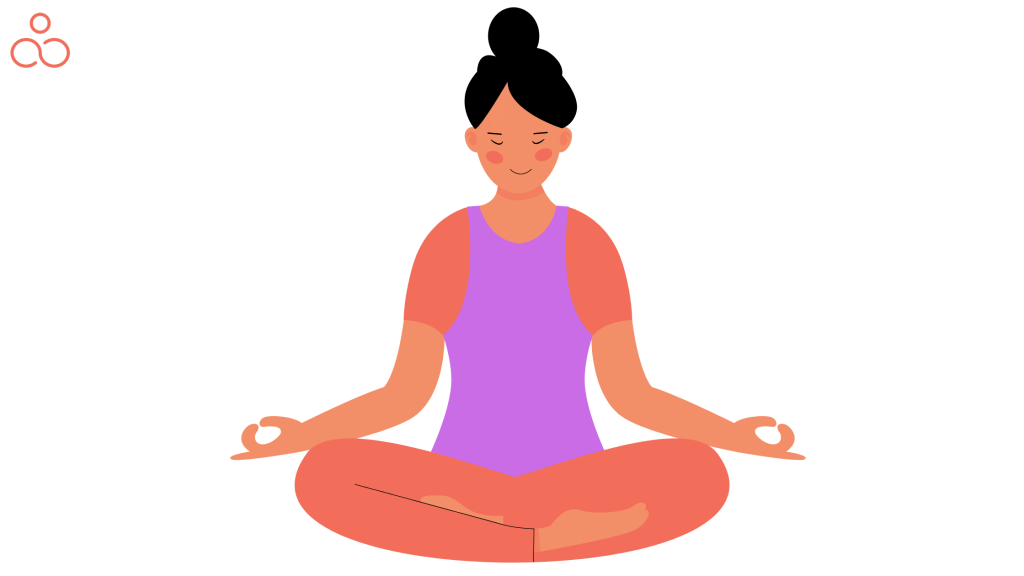
Pairing Yoga and meditation can provide a number of benefits to both the mind and body. Here are eight benefits of combining the two practices:
- Reduces stress and anxiety
Yoga and meditation are both known to help reduce stress and anxiety levels. The three best types of Yoga for anxiety are therapeutic Yoga, yin Yoga, and hatha Yoga, which offer gentler positions to unite the mind and body for anyone feeling anxious. Practicing both Yoga and meditation can help to create a deep sense of relaxation and calmness in the mind and body.
- Improves focus and concentration
Meditation helps to calm the mind and increase focus, while Yoga can help to improve concentration by bringing the mind and body into greater harmony.
- Increases flexibility and strength
Yoga is known for its emphasis on breathing and stretching, while meditation can help to increase overall physical strength.
- Boosts immune system
Both practices have been shown to boost the immune system, which can help to prevent illness and disease.
- Promotes better sleep
Regulating the breathing and focusing the mind through Yoga and meditation has been shown to improve sleep patterns.
- Enhances overall well-being
By reducing stress and anxiety, improving focus and concentration, increasing flexibility and strength, and boosting the immune system, Yoga and meditation can help to enhance overall well-being.
- Helps to manage chronic pain
Yoga and meditation have both been shown to help manage chronic pain, such as back pain, by improving flexibility, decreasing stress levels, and reducing inflammation.
- Supports emotional health
Both practices can help to improve emotional health by reducing depression, anxiety, and negative thought patterns.
Best Yoga poses to improve your meditation
These ten Yoga postures can help enrich your meditation experience:
- Easy Pose (Sukhasana): Sit comfortably with crossed legs and wrists resting on knees. Close your eyes and focus on deep breaths in and out.
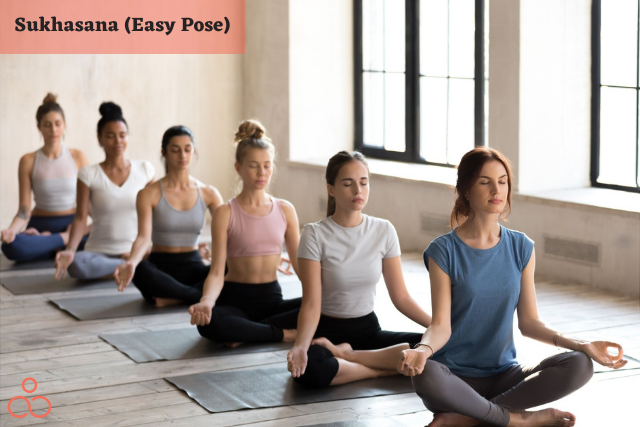
- Corpse Pose (Savasana): Lie down on your back with arms at your sides and focus on taking long, slow breaths.
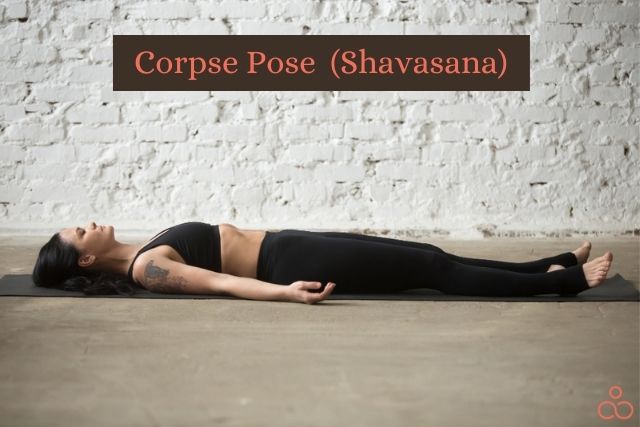
- Lotus Pose (Padmasana): Sit with legs crossed and place your feet on the opposite thigh of each leg. Take deep breaths in and out.
- Seated Forward Bend (Paschimottanasana): Sit with your legs straight out in front of you and slowly bend forward. Hold onto your ankles or feet and focus on deep breathing.
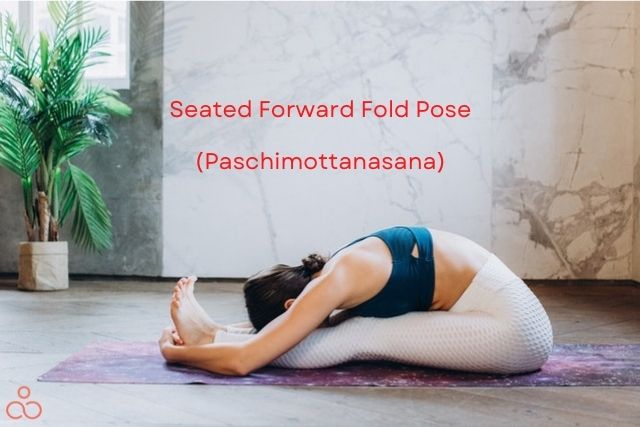
- Child’s Pose (Balasana): Kneel down and rest your forehead on the floor while stretching out your arms in front of you. Take several deep breaths.
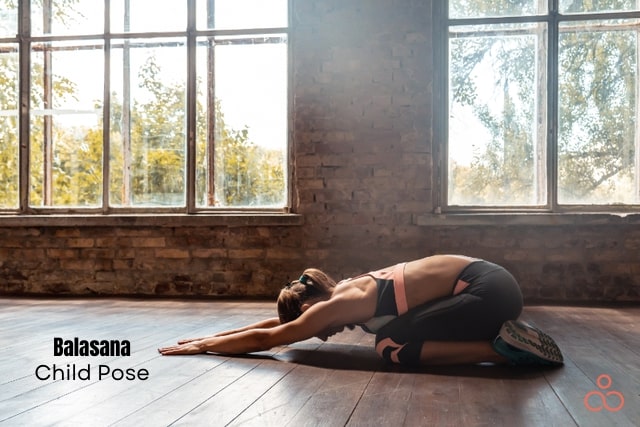
Best types of meditation to improve your Yoga practice
There are 6 types of meditation that you can do before or after your Yoga practice.
1. Breath Awareness Meditation
The first type of meditation is breath awareness meditation. Here, the emphasis is on paying attention to your breath and becoming aware of the sensations generated by each inhalation and exhalation.
2. Mantra Meditation
The second type of meditation is mantra meditation. This is where you silently repeat a mantra or phrase in your mind. 3. The third type of meditation is visualization meditation. This is where you imagine a scene or image in your mind.
4. Mindfulness Meditation
The fourth type of meditation is mindfulness meditation. Concentrate on being here in the moment and taking notice of your emotions and ideas.
5. Loving-kindness Meditation
The fifth type of meditation is loving-kindness meditation. This is where you send love and kindness to yourself and others.
10 Tips for an effortless meditation
- Finding a quiet space
Find a quiet spot where you won’t be disturbed, especially if you’re a beginner.
- Turning off electronic devices
Turn off all electronic devices to avoid any interruptions.
- Maintaining a good posture
Make sure you’re in good posture; there’s no strict way to meditate, but keeping your spine upright enables energy to flow up your body.
- Giving importance to comfort
Sit on the edge of a bed or chair with your feet on the ground, or invest in a meditation cushion.
- Taking time to be patient
Meditation can be a challenging but rewarding practice. Take your time and be patient with yourself as you learn.
- Healing with time
Anxiety and restlessness may occur initially, but with time you can manage these feelings.
- Starting at a slow pace
Start slow and gradually add more time as you become more comfortable with the practice.
- Scheduling a specific time
To make it a habit, schedule a specific time each day to meditate.
- Adding mindfulness to your practice
Consider adding a mindful walk to your practice, focusing on your breath, movement, and surroundings.
- Trying free meditation apps
You can also try a free meditation app to enhance your practice.
FAQs
What to do when you can’t meditate?
If you find it challenging to concentrate during meditation or struggle to practice daily, consider merging meditation with spiritual reading. Many experts suggest incorporating spiritual reading as part of your daily routine, similar to a morning devotion. This technique involves picking a text that aligns with your personal growth and development, reading a section daily, and meditating on and integrating what you have learned from that section.
What to do first in the morning, meditation or Yoga?
It’s really up to you! Meditation and Yoga can be great ways to start your day and make you feel calmer and more focused. If you want to focus on your mental well-being, try meditating first. If you want to focus more on physical health and flexibility, try Yoga first. Whichever one you do first, you’ll get a lot of benefits from it!
Can I do meditation after Yoga?
Yes, you can do meditation after Yoga. Meditation is an excellent approach to loosening up and taking a rest after doing Yoga, which can be very physically and intellectually tiring. It can help you reflect on the lessons you learned during the Yoga session and allow you to focus on the positive thoughts and energy you created during the practice.
How to overcome struggles to do meditation?
Meditation can be challenging, especially if you’re feeling stressed or overwhelmed. However, there are specific steps you can take to simplify the process. First, start small. If you try to meditate for an hour each day, you’ll get discouraged if it’s too hard. So try just a few minutes at first. Second, find a comfortable place to sit and relax. Finally, remember to be kind to yourself and be patient. Over time, you will get better at it.
Can you do meditation at the end of Yoga practice?
Yes! Meditation is a great way to end your Yoga practice. It helps to clear your mind and leave you feeling relaxed and refreshed. To do meditation at the end of your Yoga practice, find a comfortable position, close your eyes, and take deep breaths. Focus on how your body feels and let your mind be in the present moment. When you’re ready to come out of the meditation, slowly open your eyes and enjoy the calmness you’ve created.
Can you do Yoga without doing meditation?
Meditation is a part of Yoga, and it’s essential to do both to get the most benefits from your practice. Meditating, you focus on your breath and let your thoughts drift away. This can help you feel more relaxed and calm. So, it’s beneficial to do Yoga and meditation together.
What is the best time to practice meditation and Yoga?
The best time to practice meditation and Yoga is when you’re feeling relaxed and ready to focus. This could be in the morning, right after you wake up, or in the evening before you go to bed. It’s essential to pick a time of day when you can be alone and won’t be disturbed while you practice.
Conclusion
The advantages of Yoga and meditation are difficult to overstate, but the key is to strike the perfect balance between them. Yoga is great for stretching and moving the body, whereas meditating can soothe and quiet the mind. It’s suggested to meditate prior to Yoga for improved concentration and relaxation, and then again afterwards for more relaxation and to cool down. Combining regular physical activity and meditation can deliver a wealth of positive health outcomes for both the body and mind.

